[the_ad_placement id=”top-content-300×250″]
It’s normal to experience the ebb and flow of creativity, but sometimes we’ll find a creative block lasting much longer. What do you do when you’re sick of creating music – when the thought of returning to the computer to continue on that track or album project, instead of excitement and a sense of fulfilment, fills you with dread or frustration?
It’s easy to see how we get ourselves into this situation. Modern music production is full of pitfalls masquerading as “infinite opportunities”: falling down the rabbit hole of endless fine tweaks; overwhelm at the limitless options; switching out that (now) annoying bass sound that was the initial starting point of the whole song; scrapping whole projects in an implosion of frustration and ‘I just can’t make it work!’ self-berating… The life of a musician is never plain sailing, and there will be times when we’ve just had enough.
With this in mind, it’s not so much about trying to completely avoid these moments of creative drought or resistance, but more how we respond to these difficulties when they do arise. How we respond can ultimately mean the difference between eventually getting back in the saddle and finishing productions – or not.
The key thing is that working harder and for longer is not the answer. Efficiency and creativity don’t come from the same mental place. Instead, we’ll have to learn some tricks to loosen up our thinking. Let’s get to it:
1. Make Dedicated, Non-Goal-Oriented ‘Fun’ Time A Priority
When we take what we’re doing super-seriously, it’s easy to get overwhelmed with self-imposed pressure.
 Instead of setting yourself up for another day of ‘work’, ring-fence a specific amount of studio time during which you’re just going to ‘play’ – no objectives, no goals to reach, just explore your tools, try out crazy techniques and processing chains that you would never normally consider in your business-oriented, ‘got to get this done‘ mindset. This ‘sandboxing’ is a proven technique that will enable you to naturally discover new ways of doing things; which will in turn set off a chain reaction as your brain responds to the new stimuli and creative situations with fresh ideas and expanding options. You’re also bound to come up with a few nuggets that could later provide the starting points for new tracks – perhaps in styles you never would have considered producing before.
Instead of setting yourself up for another day of ‘work’, ring-fence a specific amount of studio time during which you’re just going to ‘play’ – no objectives, no goals to reach, just explore your tools, try out crazy techniques and processing chains that you would never normally consider in your business-oriented, ‘got to get this done‘ mindset. This ‘sandboxing’ is a proven technique that will enable you to naturally discover new ways of doing things; which will in turn set off a chain reaction as your brain responds to the new stimuli and creative situations with fresh ideas and expanding options. You’re also bound to come up with a few nuggets that could later provide the starting points for new tracks – perhaps in styles you never would have considered producing before.
Action: Having fun again will give you back what in Zen Buddhism is referred to as ‘beginners mind’ – that state when everything is new, fresh and exciting; when you drop all preconceptions about your subject. Make music a novelty again and before long you’ll be smashing through previous barriers without even noticing it.
2. Take A Break
 When we’re exasperated with what we’re doing but determined to be productive, it can feel like the most counter-intuitive thing to step away and go and do something else. But whether it’s for 20 minutes, a day, a week or a month, take some time away from the studio and get some perspective. Go and do something else, ideally completely unrelated to music-making. Rediscover your excitement or curiosity about other aspects of the world and you’ll naturally be recharging your inspiration batteries, refilling your creative tank with more juice for the studio.
When we’re exasperated with what we’re doing but determined to be productive, it can feel like the most counter-intuitive thing to step away and go and do something else. But whether it’s for 20 minutes, a day, a week or a month, take some time away from the studio and get some perspective. Go and do something else, ideally completely unrelated to music-making. Rediscover your excitement or curiosity about other aspects of the world and you’ll naturally be recharging your inspiration batteries, refilling your creative tank with more juice for the studio.
Action: Going for a walk has been the default creative block-breaker for centuries: writers, artists and musicians have long known the power of entering the sort of meditative, trance-like state that occurs when you hit the track, path or pavement. So if you don’t feel like creating something directly in the studio, at least create some space for your mind and get moving – this will allow your subconscious to start stewing up a fresh batch of delicious new ideas, and new perspectives on stale ones.
3. Mix Things Up: Feel The Fear, And Do It (Differently) Anyway
Fear is the biggest factor in creative blocks. We find ourselves relying on what has worked before, afraid to change things. This kind of rut can lead to self-doubt: “Maybe I don’t have any new ideas left”, which fuels the fear, and before we know it we’re in a downward spiral.
It’s so easy to fall into habitual ways of thinking and reacting, which can massively sabotage our creative impulses – which are by nature, new, different and often unconventional. Are you trying to simply recreate what has worked before? It’s often tempting to recreate our past successes, but this doesn’t lead to new ideas and results. If “madness is doing the same thing and expecting a different result”, it’s time to get sane and break those habits.
Action: Take a close look at your workflow when creating a piece of music, particularly the early stages. Is there anything that you do the same every single time? “Well I know I need this particular kick drum sample working with this bass sound…” Find two or three things you do every time, and forbid yourself from doing them, at least for a while.
In fact, if there is an exact opposite approach to your particular habitual behaviour, do that for a bit!
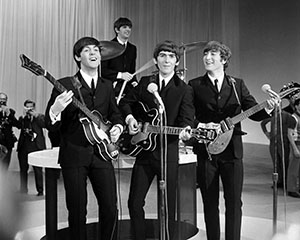
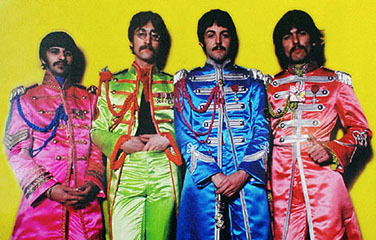
There’s a long history of artists jolting themselves out of their habitual creative procedures in order to keep moving forward and exploring more of their creative potential. In 1967, when The Beatles were feeling hemmed in by the incredibly famous identity they’d created for themselves, what did they do to escape the pressure and keep innovating? They reinvented themselves as a new band: Sgt. Pepper’s Lonely Hearts Club Band.
David Bowie and Bob Dylan are another two masters of reinvention and alter-egos, both personally and musically. More recently, even Beyonce got in on the act when she created her Sasha Fierce alter-ego as a way of tapping into a particular aspect of her creative character. And Sonny Moore, former singer of post-hardcore band From Fist To Last, only really seemed to hit his full creative potential when he switched genres and became Skrillex.
Action: Of course I’m not (necessarily) suggesting you have to break out the capes and face paint and become your own version of Ziggy Stardust: but how about if you’re a metal-head, make an electronic pop track. Or if you only listen to drum & bass or other beat-heavy genres, try making an ambient, beat-less piece. Give new aspects of your creativity a voice and you can work your way out of, or around, any block.
4. Separate The Creative And Editing Processes
With computer-based music-making, it’s far too easy to blur what are really two distinct parts of the creative process. While infinite undo and so many tweakable options are amazing, they can also lead us into the trap of self-editing, criticising and undermining our own ideas even as we are having them. It’s important to get over the idea that all your productions will be masterpieces, or even successes.
Action: Get more used to cranking stuff out at a higher rate, and allowing the creative process to unfold naturally; only later, with a different mental hat on, apply your critical scalpel to edit and improve your ideas.
5. Put It In A Drawer
What do you do when you’ve been working on a project for what must be too long, and you don’t feel you can either scrap it or start something else while it’s sitting glaring at you from your project folder? In the world of novelists and fiction writing, ‘put it in a drawer’ is the well-known term for simply setting aside a project, out of sight and (hopefully) out of mind, perhaps for months at a time; if the work is still on your mind after a considerable amount of time like that, you’ll know both that it’s worth working on further, and that you’ll have some fresh perspective with which to see it in a fresh light.
Action: While it can be painful to bury a project like this at the time, you may very well find that you don’t think about it again – in which case, you’ve freed up your attention and creative mind to develop new, better ideas.
6. Take Less Time, Not More
As we mentioned at the start, it’s easy to impose a conventional model of ‘work’ on our musical endeavours: “Time plus effort equals results.” Although we clearly do have to make time and expend some energy if we are to get anywhere, this isn’t really the whole story of how creativity and our minds work. Oftentimes, we get into the trap of thinking we just need to be at the desk for longer and we’ll eventually overcome the creative obstacles – but this makes it feel even more like hard work, a chore that must be ticked off a to-do list. Again, the best solution is the most counterintuitive.
Action: Purposefully limit the amount of time you allow yourself to spend on any aspect of a production. Treat it like a game: “OK, I’ve got exactly ten minutes to create this drum pattern – Go!” It’s surprising how this tends to short-circuit our critical brains, and rather than constantly agonising over the details, we can just get things down. Don’t worry, you can always go back to it later if it needs tidying – but more often than not, it won’t need that much ‘polishing’: remember, the rawness and sense of spontaneous creation can be one of the most appealing things about well-crafted music.
An interesting thing happens when we have deadlines: somehow, we’ll get done what absolutely needs to be done, and no more. This means stripped down, vital productions with a sense of urgency and life. Check out these legendary examples:
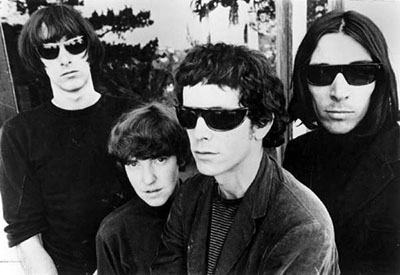 When the Velvet Underground’s carefully positioned debut album failed to make an impact on the US charts, and was then further hampered by legal complications, they went back into the studio, frustrated and energised, and recorded the classic White Light/White Heat in just two days. They put down the 17-minute “Sister Ray” in one take, accepting any mistakes they might end up making as part of the track.
When the Velvet Underground’s carefully positioned debut album failed to make an impact on the US charts, and was then further hampered by legal complications, they went back into the studio, frustrated and energised, and recorded the classic White Light/White Heat in just two days. They put down the 17-minute “Sister Ray” in one take, accepting any mistakes they might end up making as part of the track.
In 1965, Bob Dylan took just three cold January days to record Bringing It All Back Home – and even then, only takes from the last two days would ultimately be used for the finished album.
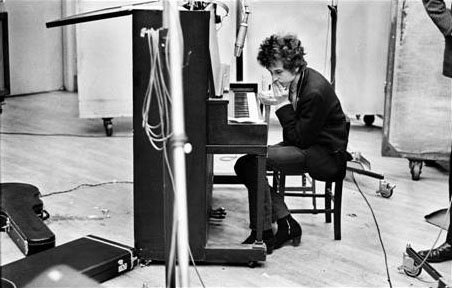
When the Beatles went to record their debut album with producer George Martin in 1963, they essentially performed their live set into two microphones at Abbey Road. In 13 hours the band recorded 10 tracks which, when supplemented with four songs from the band’s first two singles, created Please Please Me.
7. Use Fewer Tools, Not More
Distraction comes in many forms. Especially if your creative work is desk-bound, the opportunity for simply jumping online when you get frustrated, checking in with social media or watching videos of cats, can be overwhelming.
But a more insidious form of distraction can come from the very place in which we’re trying to focus: our studio equipment. DAWs, plugins, MIDI controllers, synths and apps are great – until they cause option overload, and you’re paralysed by the infinite possibilities. More equipment is not necessarily better – which is in itself an inspiring thought.
Action: See if you can make a complete track using a single VST synth – no additional effects plugins, no samples, no processing except what is available on-board your chosen synth. Reduce your creative options and you’ll be surprised how much more focused and productive you can be.
8. Change Your Environment
Bands and artists regularly decamp to new locations to write or record their new work. And although we can’t all waltz off to the legendary Hansa Studios or Muscle Shoals at the drop of a hat, the principle of switching environments still applies for home and bedroom producers.
 Action: Get out of your familiar surroundings. With todays technology, it’s never been easier to pull a Damon Albarn and make an album on your iPad. You might also find your music comes out quite different when you’re on headphones in a public place, or outside in the middle of nowhere – this is one of the great things about a change of scene. And don’t worry, you can always take your location sketches back to agonise over at leisure in the comfort of your studio later.
Action: Get out of your familiar surroundings. With todays technology, it’s never been easier to pull a Damon Albarn and make an album on your iPad. You might also find your music comes out quite different when you’re on headphones in a public place, or outside in the middle of nowhere – this is one of the great things about a change of scene. And don’t worry, you can always take your location sketches back to agonise over at leisure in the comfort of your studio later.
Also don’t forget that the journey between places can be the most inspiring thing about going somewhere different. Some of the best music ever has been created around the idea of travel, of transitioning to new places and new realms of thought. Which leads us nicely onto the next point: come up with a concept.
9. Frame Your Project With A Theme
One reason why producers get stuck in a rut is that they’re not sure what it is they’re really trying to achieve. One way around this is to give yourself a very specific focal point or idea around which to orientate your work. This way you won’t spend ages debating with yourself about whether something works or not – you’ll know much more quickly whether it’s expressing something well. This is one of my favourite things about producing music and sound design for picture: it automatically gives you a specific context for your work, freeing you from the tyranny of limitless options.
Before you start worrying about having to create a 70’s-style prog-rock concept album, remember that your thematic glue can be as clear or abstract as you want it to be in the final result.
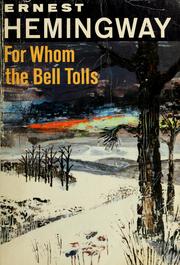 For example, Metallica have based some of their best songs on famous horror and classic literature: For Whom The Bell Tolls was inspired by Ernest Hemmingway’s 1940 novel of the same name set during bloody Spanish Civil War, and Call of Ktulu refers to the unfathomable, god-like monster that originated in the story The Call Of Cthulhu by horror-meister extraordinaire H.P. Lovecraft.
For example, Metallica have based some of their best songs on famous horror and classic literature: For Whom The Bell Tolls was inspired by Ernest Hemmingway’s 1940 novel of the same name set during bloody Spanish Civil War, and Call of Ktulu refers to the unfathomable, god-like monster that originated in the story The Call Of Cthulhu by horror-meister extraordinaire H.P. Lovecraft.
Consider how the entire Techno genre is heavily based on science fiction, and how the city of Detroit itself feeds into the imagery of a futuristic dystopian metropolis.
 Jon Hopkins recent album Immunity opens with the sound of him opening the door and stepping off the street and into his studio, and develops by following the energetically pulsing ebb and flow journey of a great night out.
Jon Hopkins recent album Immunity opens with the sound of him opening the door and stepping off the street and into his studio, and develops by following the energetically pulsing ebb and flow journey of a great night out.
Action: Try writing an alternate soundtrack to one of your favourite movies, or at least your favourite scene: this gives you a concrete framework from which to refer, with specific beginning, end and certain dramatic or action ‘beats’ in between. Or give yourself a themed challenge: “I’m going to write a track a day, every day this week – no matter what”.
10. Raise The Stakes
There’s nothing like public pressure to motivate you to just get things done. If you commit to a project where the consequences are greater than your own personal creative satisfaction – where you run the risk of letting other people down – you’ll be tapping into another powerful source of inspiration.
Action: Tell friends, relatives or your Twitter following that you will have a new release available by a given date. Give your goal just enough hype that you’d be embarrassed if you didn’t follow through and deliver on your promise. It’s a simple psychological trick, but it works.
11. Learn Some Theory
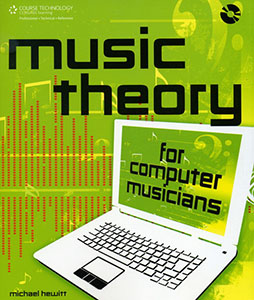 Although for some self-taught producers this might sound like replacing frustrating work with similarly frustrating and more boring work, taking some time away from writing and producing to actually learn a bit of music theory can be a great way of overcoming creative blocks. Learning about chord structure, arrangement and how to build melodies and harmonies in a directed way will stand you in perfect stead for the next time inspiration does strike.
Although for some self-taught producers this might sound like replacing frustrating work with similarly frustrating and more boring work, taking some time away from writing and producing to actually learn a bit of music theory can be a great way of overcoming creative blocks. Learning about chord structure, arrangement and how to build melodies and harmonies in a directed way will stand you in perfect stead for the next time inspiration does strike.
Action: Take a look at Music Theory for Computer Musicians by Michael Hewitt.
12. Learn Some Technique
It’s quite likely that if you’re feeling frustrated and uninspired with your music-making endeavours, it’s because you’re stumbling when it comes to actually transferring and shaping your ideas as you get them into the computer. Why not take some time away from trying to realise your ultimate vision to learn some core aspects of your chosen craft: for example, focusing on compression exclusively until you can chose how and when (and when not to) use compression like a true pro. Get back to basics and fundamentals: you’ll feel like you’re making progress again, which will build your confidence back up – which in turn will allow you to relax and let your creativity shine through once more.
I’m also going to take this opportunity to outrageously self-promote my own series of guides on some of the specific tools and techniques – including compression incidentally – that can lend a new dimension to your production craft.
13. Make A Regular Appointment
No, not with a psychiatrist just yet, but with your studio. This one is related to 6. Take Less Time, and involves setting strict, scheduled limits on your studio time. Set a schedule for yourself: it needn’t be a time-consuming commitment – as we’ve just mentioned, the shorter the time the more efficient you’ll be – but what’s important is the consistency. Say, “I will be in the studio from precisely 6-7pm every night this week… and not longer”. Another famous quote amongst novelists is, “The art of writing is the art of applying the seat of the pants to the seat of the chair” – the same thing applies to musicians.
Action: Oftentimes, cutting through procrastination and simply showing up consistently, even (or especially) for a short time, can be just what your creativity was asking for.
14. Collaborate
One of the greatest things about music as a creative form is it’s collaborative nature. And when your inspiration is drying up, almost nothing is better than bringing other people into the mix.
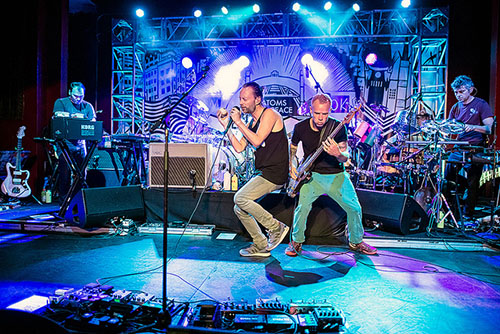
Electronic music in particular can be a very solitary activity: while that’s the very reason that some people are drawn to it (“total freedom to do whatever I want!”), this can also become a massive obstacle when you don’t have anyone else to bounce ideas off, to critique or edit your work. So if you find your brain is stagnating, simply get another one into the creative equation.
It’s also quite likely that collaboration will mean a change of scenery too, if you go to another musicians studio or rehearsal space (see 8. Change Your Environment above) – two birds with one stone!
Many a music career has been kick-started, reinvigorated or spun into an entirely new direction as a result of a particular collaboration: think Aerosmith and Run DMC; Daft Punk, Nile Rodgers and Pharrell; Dr. Dre and Eminem; weird supergroup Atoms For Peace; MF Doom and Madlib; Brian Eno and pretty much everyone at some point or other; Dave Grohl and Queens Of The Stone Age; The Chemical Brothers and Noel Gallagher; and almost everything created under James Lavelle’s UNKLE moniker.
Last year Arcade Fire teamed up with former LCD SoundSystem head honcho James Murphy on production duties to bring a different perspective to their sound on Reflektor. Incidentally, the album was initially inspired by a trip to the band member Régine Chassagne’s home country of Haiti (see 8. Change Your Environment above), and features a cameo vocal collab from none other than David Bowie on opening track ‘Reflektor’ – he happened to pop by while they were mixing in New York, and after he jokingly threatened to steal the song for himself, they went one better and got him to jump in on their own version instead.
Actions: Offer to remix someone else’s track, or do a remix exchange with a fellow producer. Or for your next session, bring in a friend as a ‘session player’: a vocalist, guitar player, bongo player – whoever will change the wavelength of a session and fire your creativity in new directions. Mix it up!
[the_ad_placement id=”bottom-content-300×250″]
Conclusion: No Need To Be Too Precious
It’s easy to get so obsessed with perfecting your art that it becomes a chore, a responsibility rather than what it truly can be: A chance for free expression, making an authentic connection with your listeners, and pure fun.
All of the points outlined here are based in some way or another on my own personal experiences with the perennial creative struggle. So above all, I hope the points and the actions detailed provide some encouragement the next time you hit a creative block!
What do you do when you’re feeling uninspired? Any particular strategies or techniques you use? Let us all know in the comments!
For more tips and techniques for getting the most out of all of your plugins and studio gear using the most effective methodologies and workflows, don’t forget to check out the Ultimate Guides series:


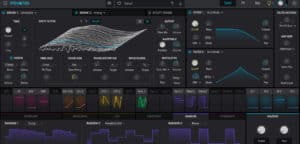



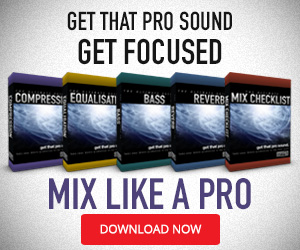
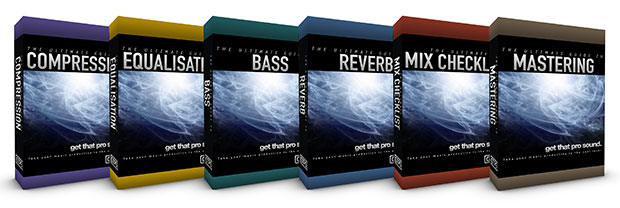

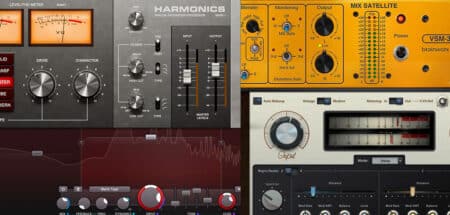
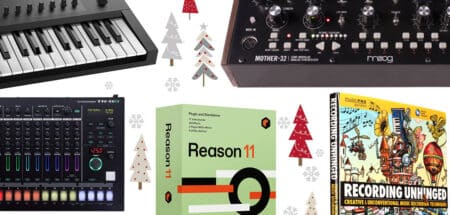
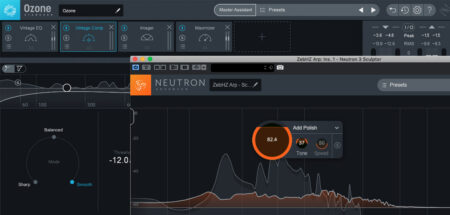
11 Comments
Great article! Brought me some new ideas, and some others are well known, but needed to be listed. Great job!
Great article, I’ve been struggling with writing new music for a few years now, to the point where the thought of actually going into my studio (which happens to contain a lot of expensive gear, which adds to the pressure “it’s wasted money, just sat there”) fills me with negative thoughts, knowing that it’s going to be another struggle. Writing melodies is no problem. Actually structuring and finishing the track is! I finished one track last year and saw that as an achievement, and even that particular track still needs to be revised in regards to the mix down. The only time I can get stuff done is when I’m on a deadline. Your tip for setting a time limit is a great one which I’m going to try later on today! I’ll be sure to post up my results 🙂
It’s stressful as I know I have the talent. I’ve had my music supported by some of the worlds top DJ’s including Armin Van Buuren. My pitfall is that I tweak things to the point where I get sick of the idea and then move on to trying to come up with a new idea. So I’m hoping the Time Limit Tip will help me get around this.
Anyway, if you want to hear the one solitary track I finished last year, here it is: https://soundcloud.com/sjrandmeela/meela-orchid-grey-no-regrets
Thanks for such a great article, it’s the best I’ve read on the topic of writer’s block. I hope some of these tips work for me, I really want music production to become exciting for me again, sharing my music with people all over the world is all I’ve ever strived for since a young age.
great tips for anyone having trouble with THE BLOCK!!!
These are very deep thoughts. Highly recommended. I think if you fear something it is always a good idea to do it anyway and try to have a close look on what you are feeling exactly. Once you can name your fear (e.g. the poison of perfection) you can take action or convince yourself that the specific fear is pointless.
Thanks for the great article!
Thanks Claudius, and I like your phrase “the poison of perfection” – very true!
A wonderful column full of ideas, though I have to chuckle seeing “Learn some theory” and “Learn some technique” so far down the list.
Out of these, #7 hit me the hardest a while back. First, I ditched all the ‘magic bullet’ plugins (console emulation, saturation, analog warmth and the likes). Then, spatial positioning. Swapped so-called true stereo panning for regular balance knobs. Finally, replaced convolution with a simple algorithmic reverb. My orchestral template now barely has any signal processing in it, yet it has never sounded better to me. I guess I was held back by the good old “more is more” angle.
I’m a novice arranger and lately get confused to how find my way till I found this website and….
I just wanna thank you for this amazing articles, I’m a 22 years old musician from Iran and for sure may be you never hear my name or may be do, but I want to know these helped me a lot and so indebted to you pal.
Great article! Especially point #1 is dead on.
Thanks Erik!
Nothing but great. It’s all I’m experiencing at the moment – not writers block, but trying new ways and getting back to being playful as a complement to my usually very strict and efficient way to work.